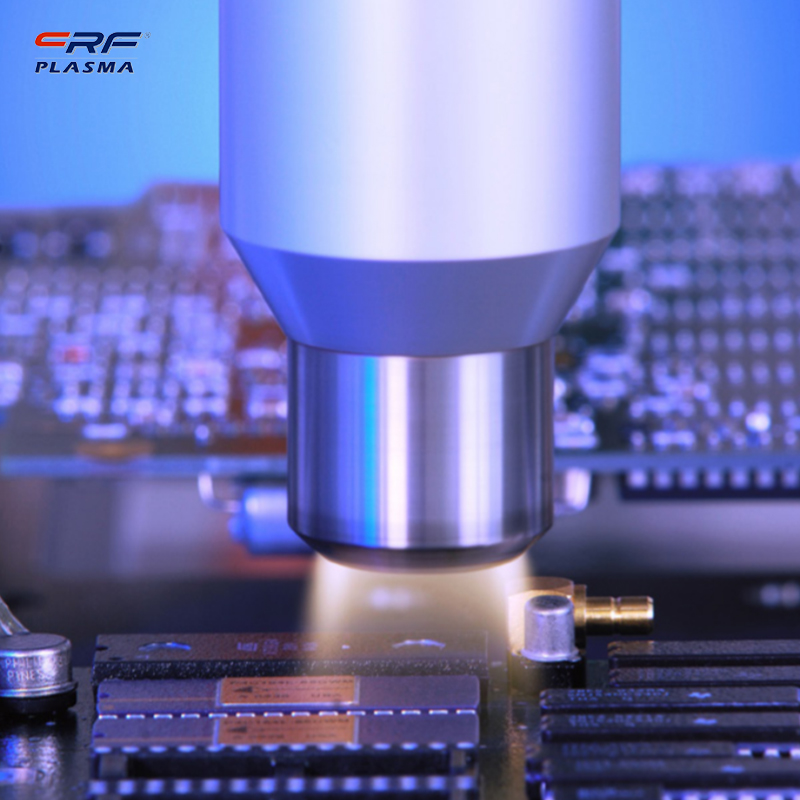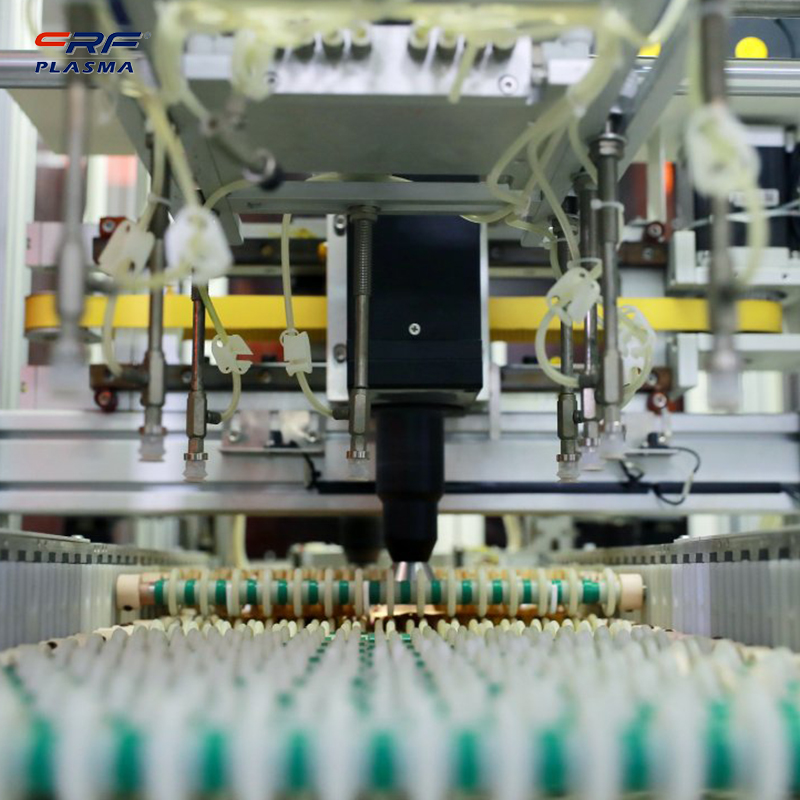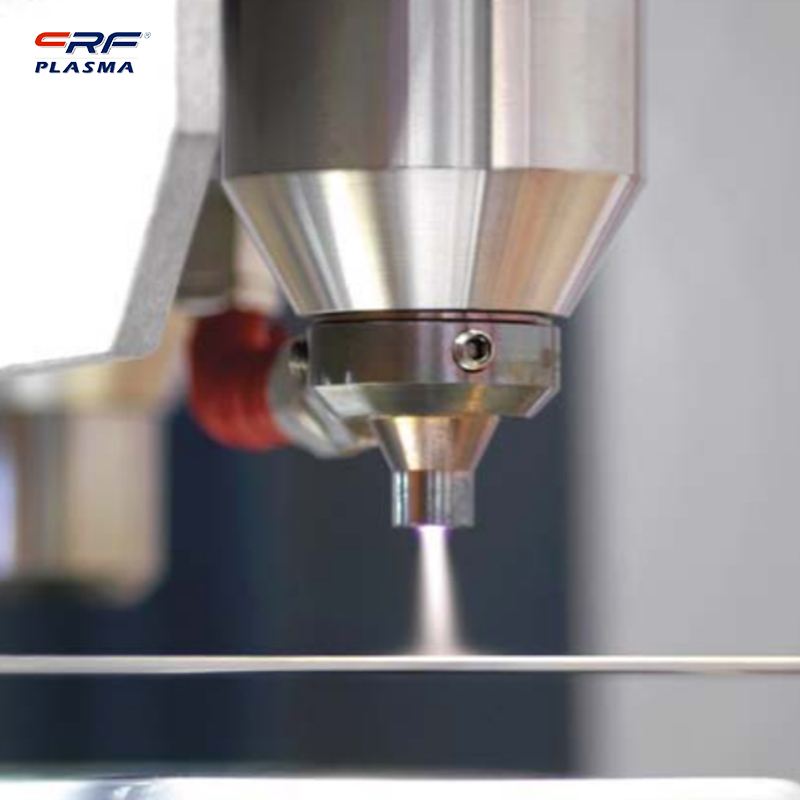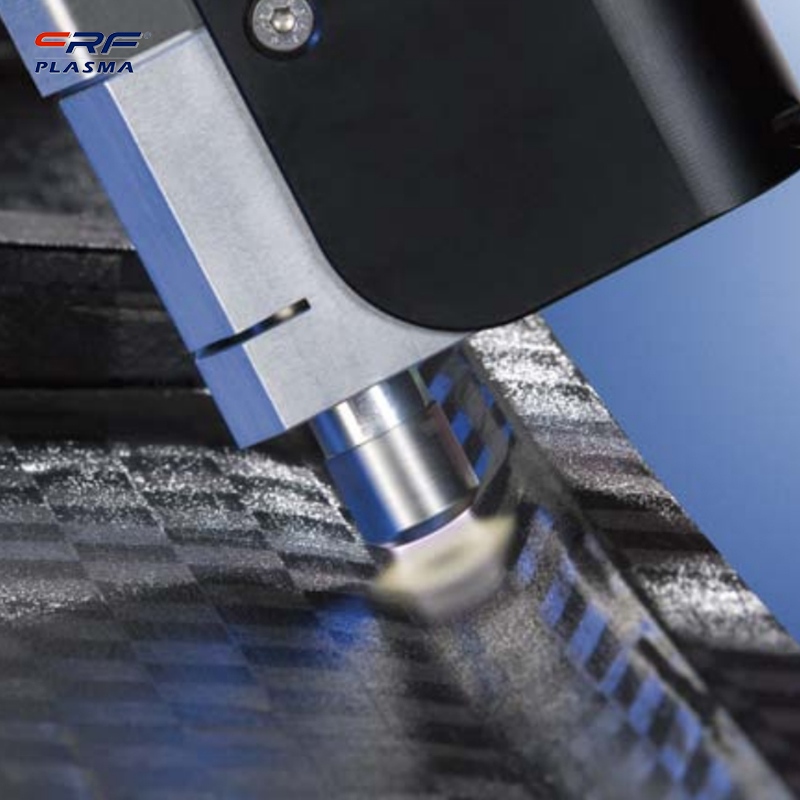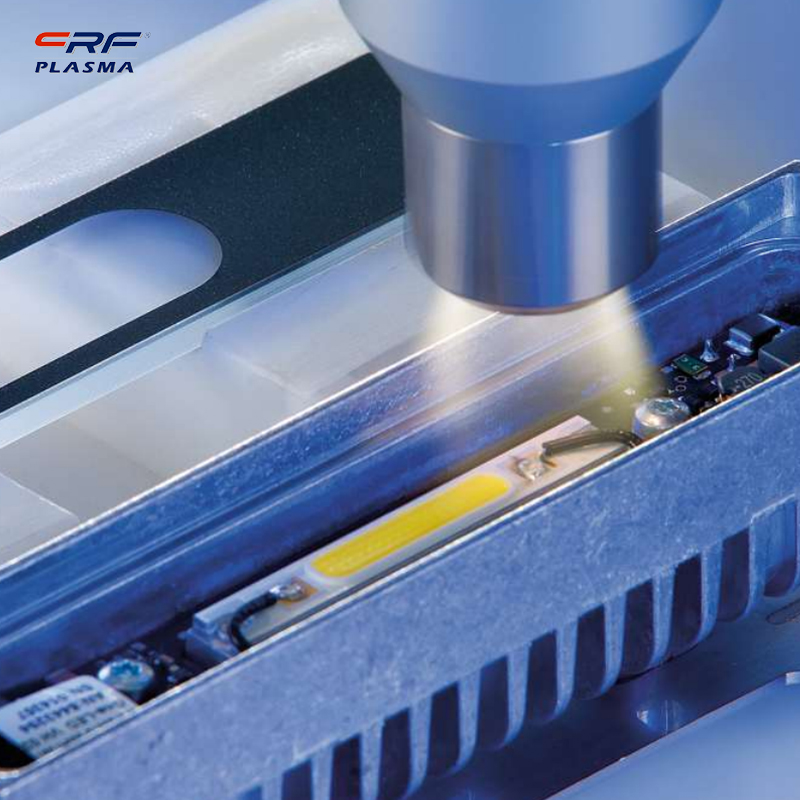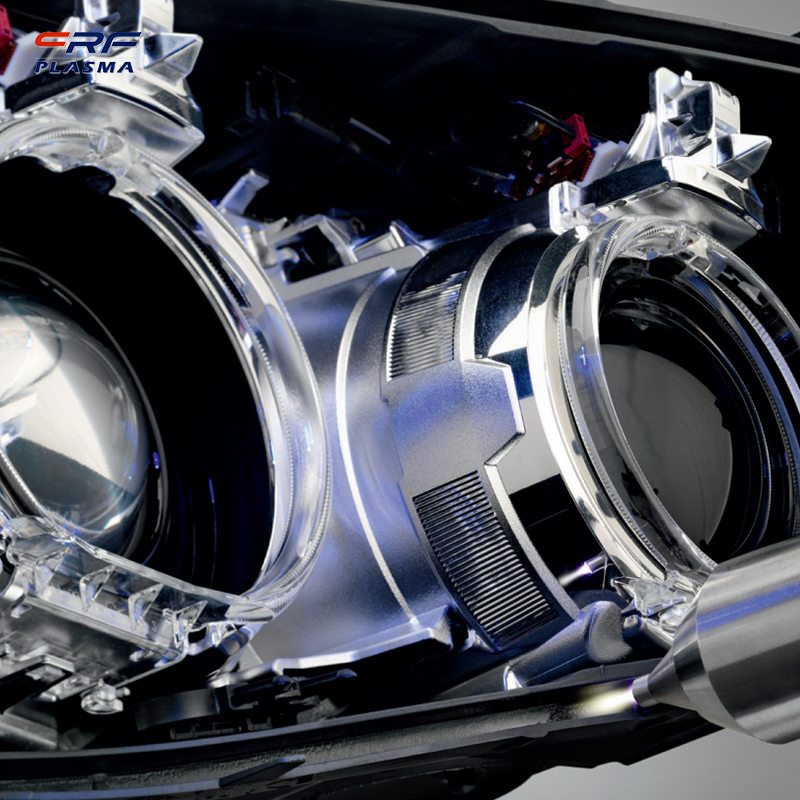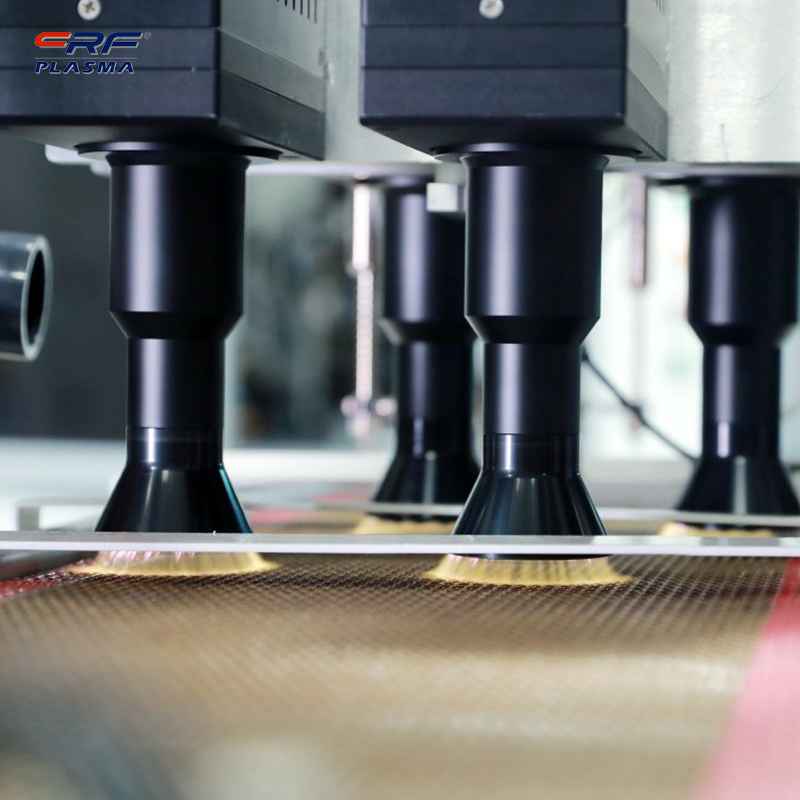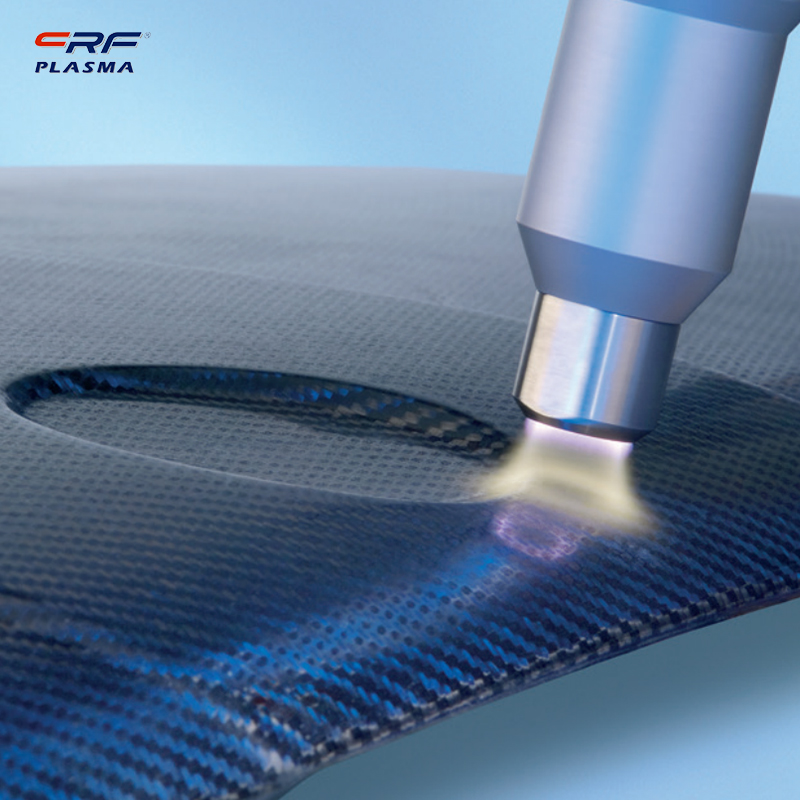
Welcome to Shenzhen Sing Fung Intelligent Manufacturing Co., Ltd.
E-mail:shaobo@sfi-crf.com
How plasma etching of LDPE films is described today
- Categories:Company Dynamics
- Author:plasma cleaning machine-surface treatment equipment-CRF plasma machine-Sing Fung Intelligent Manufacturing
- Origin:
- Time of issue:2022-10-13
- Views:
(Summary description)How plasma etching of LDPE films is described today Plasma modification has the following main advantages. ① It is a dry process, which meets the current demand for energy saving and environmental protection. ②No special requirements for the material to be treated, which has universal applicability. ③ Short processing time, only a few seconds to a few minutes. ④Only the surface layer of the material is modified, and no damage is caused to the substrate itself. Therefore, plasma technology has a better application effect compared with traditional modification technology. Plasma is a non-condensed system produced by complete or partial ionization of the gaseous state, the so-called "ionization" means that at least one electron is separated from the atom or molecule, so that the atom or molecule is converted into a positively charged ion. This system includes atoms, molecules, ions in excited and sub-stable states, etc. The system has an equal number of positive and negative charges inside and is electrically neutral on a macroscopic scale. The application of plasma technology is particularly significant in materials science, where new materials are developed by modifying their surfaces through plasma technology in order to achieve higher performance, which is an important tool in the current development of new materials. Plasma modifies the surface of a material, usually by impacting the surface of the material and breaking the original chemical bonds to form new ones. Most of the ion energies in plasma, except ions, are higher than the bonding energy of chemical bonds. This indicates that plasma can break the chemical bonds on the material surface and form new bonds. Plasma treatment for surface modification is to expose the material to the plasma of non-polymeric gas and bombard the surface of the material by the plasma to cause changes in the polymer structure, thus achieving the purpose of surface modification of polymer materials. Plasma treatment is mainly for inert gases. Organic polymer materials are treated with oxygen, nitrogen, hydrogen, argon and other non-polymeric inorganic gases in contact with air, which introduce functional groups on the surface and form cross-linked structural layers or generate free radicals. In general, the surface hydrophilicity is substantially increased after plasma treatment of the surface. The crystallinity and timeliness of PET films after surface modification were investigated. The water contact angle of the films decreases with increasing energy density after treatment under dielectric blocking discharge conditions, and the highest crystallinity is biaxially stretched with the smallest contact angle of PET films. The air plasma had the most significant etching effect on the LDPE films and therefore the most prominent change in surface morphology, and the peel strength after bonding was significantly higher compared to that before treatment under optimal conditions. This is due to the interaction of the reactive groups generated by the air plasma with the LDPE surface phase thus increasing the reactive particles and attracting oxygen-containing groups. In addition, due to the time-sensitive nature of plasma treatment, the treatment should be immediately followed by the next process. After the plasma jet treatment of PTFE, the hydrophilic properties of the material surface are enhanced. From SEM pictures, it was found that the treated PTFE surface produced dense micron-sized particles, which led to an increase in surface roughness, and these particles increased in density as well as roughness with increasing treatment time. This is due to the breakage of the C-F bond on the PTFE surface to introduce oxygen-containing groups. After plasma modification treatment, the hydrophilicity and surface roughness of the material surface were greatly increased and showed a linear increase with the working pressure. The increased nitrogen content after plasma treatment improves the biocompatibility of the polycarbonate. Translated with www.DeepL.com/Translator (free version)
How plasma etching of LDPE films is described today
(Summary description)How plasma etching of LDPE films is described today
Plasma modification has the following main advantages.
① It is a dry process, which meets the current demand for energy saving and environmental protection.
②No special requirements for the material to be treated, which has universal applicability.
③ Short processing time, only a few seconds to a few minutes.
④Only the surface layer of the material is modified, and no damage is caused to the substrate itself. Therefore, plasma technology has a better application effect compared with traditional modification technology. Plasma is a non-condensed system produced by complete or partial ionization of the gaseous state, the so-called "ionization" means that at least one electron is separated from the atom or molecule, so that the atom or molecule is converted into a positively charged ion. This system includes atoms, molecules, ions in excited and sub-stable states, etc. The system has an equal number of positive and negative charges inside and is electrically neutral on a macroscopic scale. The application of plasma technology is particularly significant in materials science, where new materials are developed by modifying their surfaces through plasma technology in order to achieve higher performance, which is an important tool in the current development of new materials. Plasma modifies the surface of a material, usually by impacting the surface of the material and breaking the original chemical bonds to form new ones. Most of the ion energies in plasma, except ions, are higher than the bonding energy of chemical bonds. This indicates that plasma can break the chemical bonds on the material surface and form new bonds.
Plasma treatment for surface modification is to expose the material to the plasma of non-polymeric gas and bombard the surface of the material by the plasma to cause changes in the polymer structure, thus achieving the purpose of surface modification of polymer materials.
Plasma treatment is mainly for inert gases. Organic polymer materials are treated with oxygen, nitrogen, hydrogen, argon and other non-polymeric inorganic gases in contact with air, which introduce functional groups on the surface and form cross-linked structural layers or generate free radicals. In general, the surface hydrophilicity is substantially increased after plasma treatment of the surface.
The crystallinity and timeliness of PET films after surface modification were investigated. The water contact angle of the films decreases with increasing energy density after treatment under dielectric blocking discharge conditions, and the highest crystallinity is biaxially stretched with the smallest contact angle of PET films. The air plasma had the most significant etching effect on the LDPE films and therefore the most prominent change in surface morphology, and the peel strength after bonding was significantly higher compared to that before treatment under optimal conditions. This is due to the interaction of the reactive groups generated by the air plasma with the LDPE surface phase thus increasing the reactive particles and attracting oxygen-containing groups. In addition, due to the time-sensitive nature of plasma treatment, the treatment should be immediately followed by the next process.
After the plasma jet treatment of PTFE, the hydrophilic properties of the material surface are enhanced. From SEM pictures, it was found that the treated PTFE surface produced dense micron-sized particles, which led to an increase in surface roughness, and these particles increased in density as well as roughness with increasing treatment time. This is due to the breakage of the C-F bond on the PTFE surface to introduce oxygen-containing groups.
After plasma modification treatment, the hydrophilicity and surface roughness of the material surface were greatly increased and showed a linear increase with the working pressure. The increased nitrogen content after plasma treatment improves the biocompatibility of the polycarbonate.
Translated with www.DeepL.com/Translator (free version)
- Categories:Company Dynamics
- Author:plasma cleaning machine-surface treatment equipment-CRF plasma machine-Sing Fung Intelligent Manufacturing
- Origin:
- Time of issue:2022-10-13 11:24
- Views:
How plasma etching of LDPE films is described today
Plasma modification has the following main advantages.
① It is a dry process, which meets the current demand for energy saving and environmental protection.
②No special requirements for the material to be treated, which has universal applicability.
③ Short processing time, only a few seconds to a few minutes.
④Only the surface layer of the material is modified, and no damage is caused to the substrate itself. Therefore, plasma technology has a better application effect compared with traditional modification technology. Plasma is a non-condensed system produced by complete or partial ionization of the gaseous state, the so-called "ionization" means that at least one electron is separated from the atom or molecule, so that the atom or molecule is converted into a positively charged ion. This system includes atoms, molecules, ions in excited and sub-stable states, etc. The system has an equal number of positive and negative charges inside and is electrically neutral on a macroscopic scale. The application of plasma technology is particularly significant in materials science, where new materials are developed by modifying their surfaces through plasma technology in order to achieve higher performance, which is an important tool in the current development of new materials. Plasma modifies the surface of a material, usually by impacting the surface of the material and breaking the original chemical bonds to form new ones. Most of the ion energies in plasma, except ions, are higher than the bonding energy of chemical bonds. This indicates that plasma can break the chemical bonds on the material surface and form new bonds.
Plasma treatment for surface modification is to expose the material to the plasma of non-polymeric gas and bombard the surface of the material by the plasma to cause changes in the polymer structure, thus achieving the purpose of surface modification of polymer materials.
 Plasma treatment is mainly for inert gases. Organic polymer materials are treated with oxygen, nitrogen, hydrogen, argon and other non-polymeric inorganic gases in contact with air, which introduce functional groups on the surface and form cross-linked structural layers or generate free radicals. In general, the surface hydrophilicity is substantially increased after plasma treatment of the surface.
Plasma treatment is mainly for inert gases. Organic polymer materials are treated with oxygen, nitrogen, hydrogen, argon and other non-polymeric inorganic gases in contact with air, which introduce functional groups on the surface and form cross-linked structural layers or generate free radicals. In general, the surface hydrophilicity is substantially increased after plasma treatment of the surface.
The crystallinity and timeliness of PET films after surface modification were investigated. The water contact angle of the films decreases with increasing energy density after treatment under dielectric blocking discharge conditions, and the highest crystallinity is biaxially stretched with the smallest contact angle of PET films. The air plasma had the most significant etching effect on the LDPE films and therefore the most prominent change in surface morphology, and the peel strength after bonding was significantly higher compared to that before treatment under optimal conditions. This is due to the interaction of the reactive groups generated by the air plasma with the LDPE surface phase thus increasing the reactive particles and attracting oxygen-containing groups. In addition, due to the time-sensitive nature of plasma treatment, the treatment should be immediately followed by the next process.
After the plasma jet treatment of PTFE, the hydrophilic properties of the material surface are enhanced. From SEM pictures, it was found that the treated PTFE surface produced dense micron-sized particles, which led to an increase in surface roughness, and these particles increased in density as well as roughness with increasing treatment time. This is due to the breakage of the C-F bond on the PTFE surface to introduce oxygen-containing groups.
After plasma modification treatment, the hydrophilicity and surface roughness of the material surface were greatly increased and showed a linear increase with the working pressure. The increased nitrogen content after plasma treatment improves the biocompatibility of the polycarbonate.
Translated with www.DeepL.com/Translator (free version)
Scan the QR code to read on your phone

TEL:0755-3367 3020 / 0755-3367 3019

E-mail:sales-sfi@sfi-crf.com

ADD:Mabao Industrial Zone, Huangpu, Baoan District, Shenzhen





